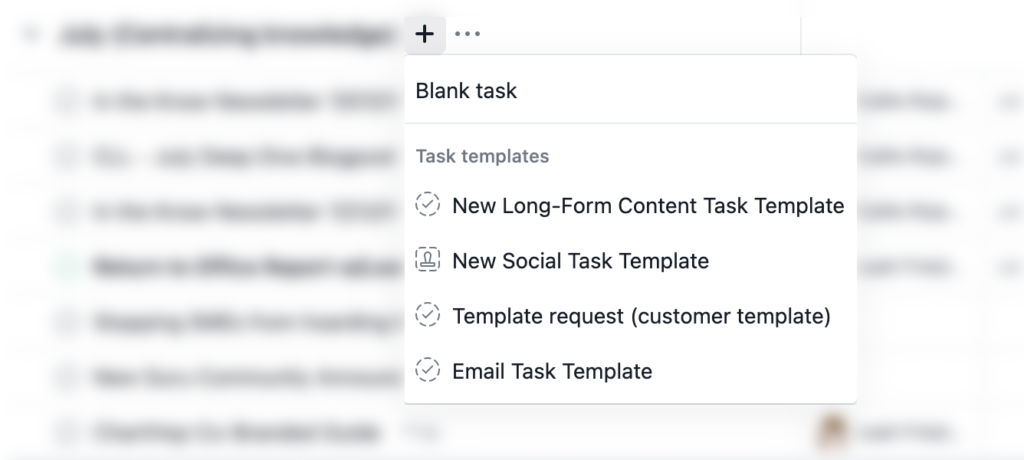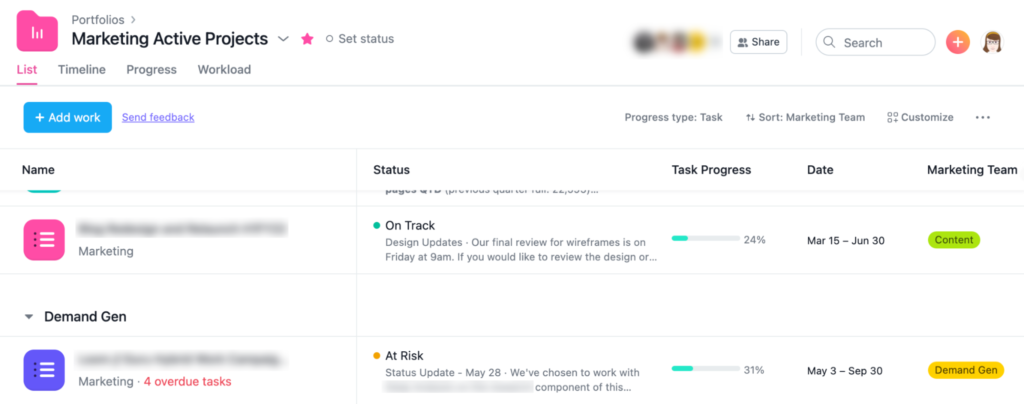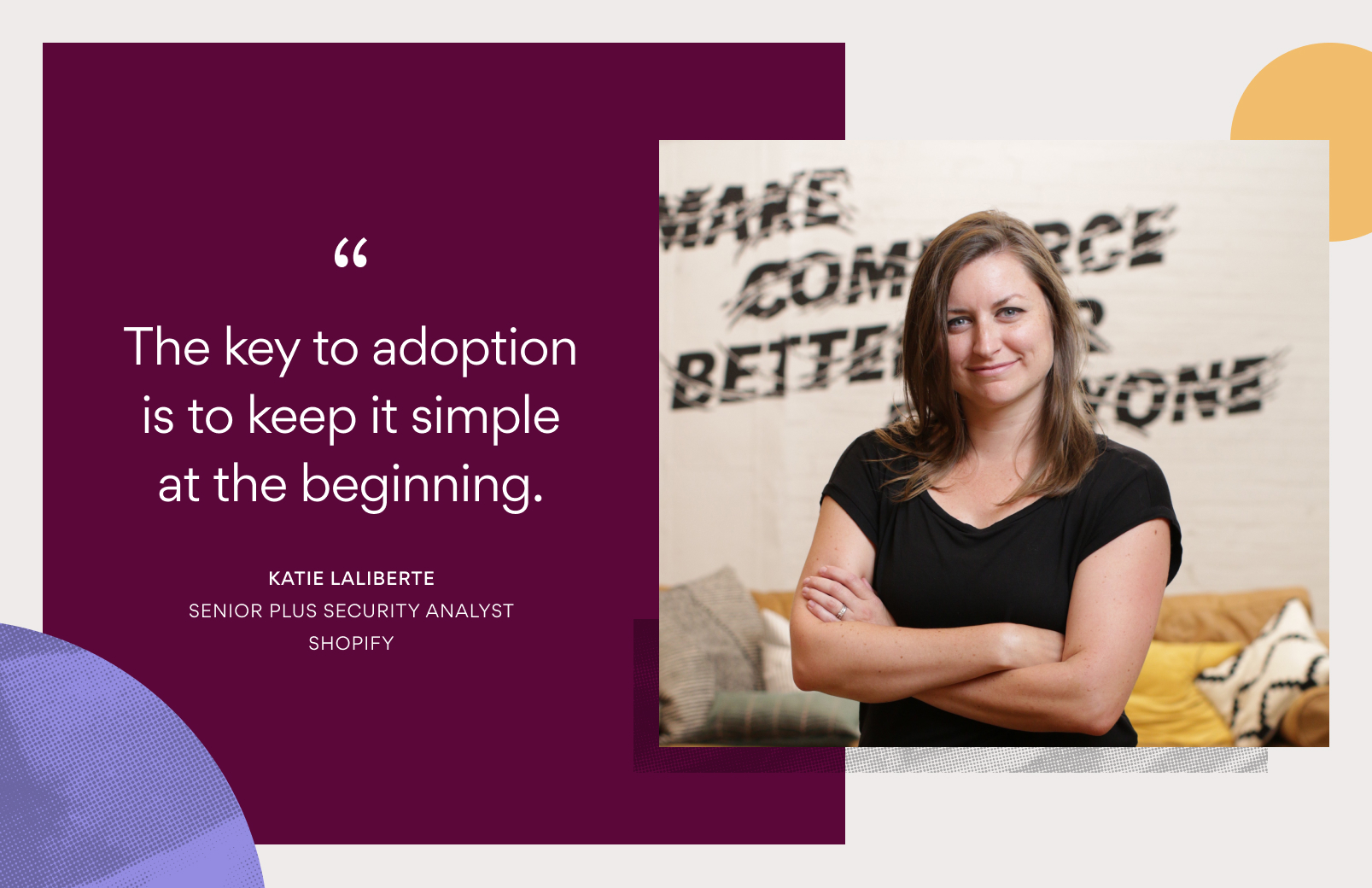Simplifying complexity: How Guru manages remote teams with Asana

Editor’s note: This is a guest post by Leah E. Friedman, Sr. Content Marketing Manager at Guru.
While a company’s headcount might grow person-by-person, its functional complexity grows exponentially. In a team of only 10 people, there are over a thousand possible combinations of working relationships; for a team of 15, there are over thirty thousand. But let’s forget the math. After all, we’re not talking about cracking a safe, we’re talking about working with people. And when we work with people, complexity is about more than a numbers game. It’s about all of the factors (environmental, physical, emotional, societal) that affect us on a day-to-day basis.
Now that we’re moving fully into a distributed working environment (whether that means fully remote, partially remote, or multi-office), how can we put efficiency and structure behind that complexity in a way that accelerates business growth instead of hindering it?
At Guru, our goal is to get everyone the knowledge they need to do their jobs, where and when they need it. But as a growing company with hub locations on two coasts and employees everywhere in between, we know that providing static information can only get you so far. In order to get anything done, active management of our distributed workforce is required. And while we’re still figuring it out, here’s what has helped our people managers and leadership so far.
Promoting and providing transparency
One killer of culture and productivity is a lack of transparency in decision-making and project progress. These are a big enough battle when everyone shares an office, but in a distributed culture, you can’t simply glean what you need to know walking past an un-wiped whiteboard or getting pulled into an ad hoc conversation.
Even frequent meetings don’t necessarily solve the transparency issue. A key stakeholder might be out of the office and without clear next steps, you’ll be back having the exact same conversation soon enough.
Instead, look to easily repeatable processes and granular, trusted documentation to solve for both problems, regardless of where your team members are located. Any process is ultimately repeatable, but by making it simple to do, you incentivize people to stop trying to reinvent the wheel. By giving them the information they need to effectively carry out that templated process you’re able to ensure that projects can move quickly, with a minimum of interruption. (“Wait, what are we supposed to do here, exactly? Better ask Homer, even though he won’t be able to respond until tomorrow morning”).
How to make the best use of time in distributed teams
The place to start creating efficient processes is at the team level. For instance, with a team split between Philadelphia and San Francisco, Guru’s Customer Support team coordinates the biweekly team meeting agenda in Asana, which allows everyone to add ideas and thoughts beforehand on their own time. Using Asana for our agenda items also helps the meeting stay on task and allows the team to keep a running log of what was discussed for those who might have to miss it.

But we don’t stop at templates for team meetings. We use them for all recurring cross-functional projects at the team level (including things like our customized quarterly content calendar, which also makes use of task templates and input forms to make it easy for anyone across the company to submit an idea.)

Finally, we use portfolio and project updates to give everyone transparency into the state of each project we work on.

Depending on how many cross-dependencies a project has, it might live in multiple different portfolios (you want people to find what they need, not make them hunt for it!), but everyone has the same amount of visibility into how things are tracking and what needs to happen. We even align all of our projects to specific company OKRs (also tracked in Asana). By leaning into complexity in this case, we’re actually making transparency easier.
The best way to keep distributed teams informed
But there’s a lot of information that needs to be captured that isn’t part of specific projects, and given the fragmented way distributed teams communicate, there needs to be a meta-layer where information can be searched for, found, trusted, and used. Emails get buried, Slack threads move too quickly, and some conversations still even happen ad hoc in hallways.
To ensure that all team members—regardless of location, time zone, or project management platform—can have a consistent experience, we have to provide them with a company-wide single source of truth. That’s why we capture everything from explicit knowledge (or structured information), implicit knowledge (applied information or know-how), and tacit knowledge (informal, cultural specificities such as why everyone uses specific custom emoji in Slack) in Guru.
This information can and does change frequently as we evolve as an organization — and that’s OK! There’s no reason for any of it to be static and unalterable. What worked for our company three years ago probably won’t work for us now that we have different employees, new features, and a different company mindset.
Ideally, this meta-layer integrates with your other programs in order to create a seamless experience wherever team members are in order to reduce that conversational fragmentation. After all, having fragmented conversations is less consequential if you’re all working from the same set of facts and expectations.
Redundancies don’t hurt either. In this case, we can use our own product as a connective layer to Asana in order to ensure correct usage of the latter, replacing the need for inconsistent training sessions and preventing the possibility of incorrect word of mouth spreading across offices.

The key to managing complexity in distributed teams
There’s little use in trying to count the number of layers of complexity within any organization. The numbers are too high and change too frequently to be of any use. But a consistency of experience is possible, even in fully remote or distributed teams. Company culture and employee engagement don’t have to suffer just because you can’t all be in the same room making your way through a backlog of popcorn.
That culture will necessarily look different than one in an office-based culture, and yes, it will lead to greater complexity. In the end, though, taking the guesswork and confusion out of the informational unknowns and actual processes of the work that needs to be done can give everyone time back to organically build a culture unique to you.
Leah E. Friedman is an evangelist for great knowledge management practices and longtime Asana power user. When not working, she’s a pop culture aficionado and trivia fan. She lost on Jeopardy!

